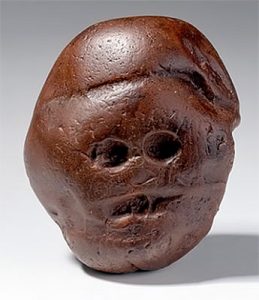We often hear about the similarities between humans and our closest primate relatives—chimpanzees and bonobos—especially when it comes to social behaviours, like the mother–child bond. These comparisons are used to draw beautiful parallels that make us feel more connected to the animal kingdom, but this often requires ignoring the differences. In this article, I talk about the glaring fact of dispersal away from the mother.
In all primate species, at least one sex disperses from the natal group upon reaching maturity. This helps prevent inbreeding and promotes genetic diversity, a pattern deeply rooted in the evolutionary history of primates. Given this fact, it seems logical to assume that our last common ancestor with chimpanzees and bonobos also practised this strategy. But humans somehow took a different path. We’ve developed tight-knit, multigenerational family units, where children remain close to their mother and/or father throughout their lives. This divergence raises important questions about the nature of human evolution and challenges the scientific status of mainstream explanations.
Modern Myths
Mainstream evolutionary theories often suggest that the close bond between human parents and their children is a result of infants becoming increasingly brainy and dependent, driving the evolution of more caring parents and grandparents. But this idea is a little too good to be true. If parental investment naturally co-evolved with infant dependence, would we not see human-like families among other species? Surely, humans are not the only organisms that would benefit from having grandma around to help.
Chimpanzee infants, like other primates, cling to their mothers’ fur from the moment they are born, as it is crucial that the mother retains the freedom of her arms. Compare this to the human case, where highly altricial infants need to be carried. It is far more plausible that this unusual outcome resulted from the manipulation of infants—a trait present in other primates. Infants became a burden, but their immaturity meant that our ape ancestors could gain control over malleable children. In this context, increasingly elaborate and mutually beneficial behaviours emerged, especially a new form of communication. But this evolution began with parental control and selection, not child altriciality. In other words: domestication.
This view turns the standard evolutionary account on its head: it wasn’t reproductive success that required grandmothers, but grandmothers that required reproductive success. This logical reversal helps explain several puzzles of human evolution—chief among them why only human primates maintain close, lifelong bonds with their children. Over generations, parents recruited their offspring into stable, multigenerational coalitions, laying the groundwork for the distinctive social structures of human life.
Glimpses into Early Human Intentionality: Wrangham’s Observation and the Makapansgat Cobble
Interestingly, we see precursors of this child-rearing behavior in observations of our primate relatives and in the archaeological record. For example, in the wild, young chimpanzees have been documented carrying sticks or other objects around in a manner that mimics the way they would handle an infant. This behavior, often referred to as “stick carrying,” suggests that the nurturing instincts in apes can extend beyond their offspring to inanimate objects, possibly as a form of play or practice for future parenting.
Renowned primatologist Richard Wrangham provided a particularly compelling example when he documented a chimpanzee who carried a log around, treating it as if it were an infant, and even building a nest for it to sleep in. While rare, this behavior underscores the idea that the nurturing instincts observed in apes can be directed towards non-living objects, hinting at a primitive form of caregiving. This may have laid the groundwork for more complex and intentional child-rearing practices in early humans.
 The Makapansgat cobble provides another intriguing clue. Discovered in a South African cave, this small stone, which resembles a human face, was likely carried over long distances by an Australopithecine. The cobble suggests early forms of symbolic thinking or emotional attachment, reflecting a cognitive shift towards valuing and controlling “babies” in ways that go beyond mere survival. These behaviors—both in Wrangham’s chimpanzee and in the Makapansgat cobble—hint at the evolutionary beginnings of the complex, intentional child-rearing behaviors that later became a hallmark of human societies.
The Makapansgat cobble provides another intriguing clue. Discovered in a South African cave, this small stone, which resembles a human face, was likely carried over long distances by an Australopithecine. The cobble suggests early forms of symbolic thinking or emotional attachment, reflecting a cognitive shift towards valuing and controlling “babies” in ways that go beyond mere survival. These behaviors—both in Wrangham’s chimpanzee and in the Makapansgat cobble—hint at the evolutionary beginnings of the complex, intentional child-rearing behaviors that later became a hallmark of human societies.
Bipedalism and Speciation
Domestication provides an interesting explanation for the evolution of bipedalism. Unlike other apes, whose offspring cling to their mothers, early humans may have started carrying their children and selecting those who were more dependent and malleable. As we know from cases of artificial selection, this often leads to the retention of juvenile traits into adulthood. The human foot, which resembles the foot of a chimpanzee foetus, is an example. This fetalisation of the foot aids in standing and walking upright, highlighting the interplay between social behaviour and physical evolution in humans.
This idea stands in contrast to mainstream explanations of bipedalism, which often focus on “innocent” environmental or locomotive factors—such as the need to wade through water, reach for fruit in tall grass, reduce sun exposure, or free the hands for tool use. Instead, we should consider the social dynamics of parent-offspring relationships as a driving force in the evolution of humans. This control likely played a significant role in the cessation of the dispersal pattern in our lineage. By artificially domesticating, selecting for traits that kept offspring close and loyal, our ancestors achieved the increased reproductive output, longer childhoods, anatomical gracility and behavioural flexibility that characterise us.
Domestication may therefore explain the remarkable diversity observed within the genus Homo. Unlike chimpanzees and bonobos, which show relatively limited variation, the fossil record of Homo species reveals a wide range of anatomical and behavioural differences—for example, compare Homo naledi to Homo neanderthalensis. So, just as artificial selection in domesticated animals leads to rapid changes and distinct breeds, early human parents may have selected traits in their offspring based on compatibility with sexual, familial, and cultural norms. This process could have accelerated the diversification of hominins, leading to the variety of Homo species we see in the fossil record.
Conclusion: Reconsidering the Nature of Human Evolution
The divergence between human social structures and those of our closest primate relatives underscores a fundamental difference that mainstream evolutionary explanations often gloss over. This isn’t surprising. Mainstream narratives, both modern and ancient, function to justify a certain social order. Yet, to truly understand our origins, we need to step away from these comfortable stories. Why did humans evolve to prioritise kin cohesion over dispersal, breaking a 50-million-year-old pattern? The behaviours observed in Wrangham’s chimpanzee and the symbolic importance of the Makapansgat cobble might offer valuable insights, besides the numerous indications that we have been, and continue to be, domesticated.
